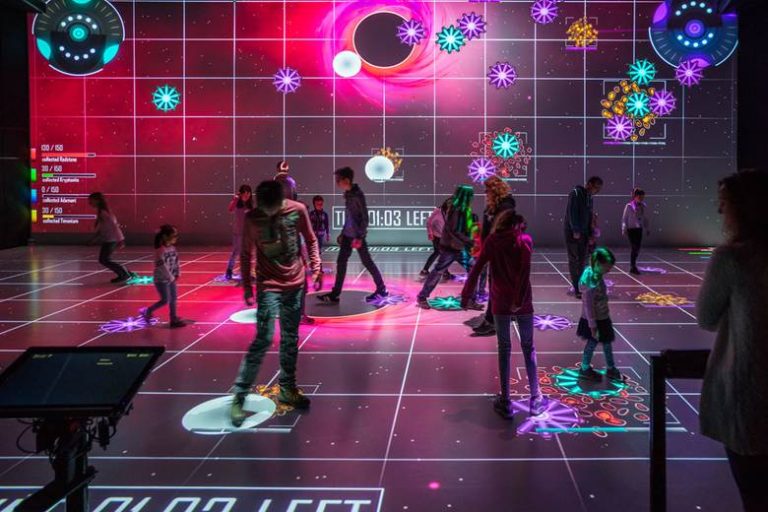The line between the audience and performer has been increasingly blurred in the ever-evolving digital landscape. Interactive entertainment, which was once considered a niche market for gamers or tech enthusiasts, has now evolved into a sprawling domain that touches nearly every corner of our lives. From virtual reality games to adventure slots, educational simulations, and immersive theater, the age of passive consumption is giving way to a new era of active engagement. However, what exactly defines interactive entertainment? Why is it capturing the attention of millions? Plunge in to find out!
Interactive Gaming

This refers to content that requires direct user import to influence outcomes, personalize experiences, or generate responses. Unlike traditional media like films, books, or music, interactive formats flourish in participation. The user is not just a consumer but an active agent within the narrative or system.
At its core, this genre entails video games, but its reach extends into live-action roleplay (LARP), augmented and virtual reality (AR/VR), gamified educational interactive TV series (like Netflix’s Bandersnatch), and AI-powered storytelling platforms. These systems are powered by digital technologies and storytelling mechanisms designed to be reactive, dynamic, and deeply personal.
Another significant evolution in entertainment has been the shift of narrative power from creators to users. In traditional storytelling, the author or director controls the plot. On the other hand, interactive formats allow users to shake the story. This power shift opens up numerous outcomes, emergent narratives, and layers of personalization. This phenomenon is exemplified by games like The Witcher 3: Wild Hunt or Detroit: Become Human, where players’ choices dramatically affect character arcs and plot revolution. In more experimental settings, AI-driven narratives use machine language to adapt stories in real-time based on user input, making every experience unique.
Gaming
It is no surprise that video games have become the flag bearers of this movement. The global gaming industry, now worth more than $200 billion, leads in pushing the boundaries of immersion and interactivity. From AAA titles to indie gems, games are increasingly sophisticated in design, usually blurring the lines between game mechanics, cinematic storytelling, and real-world simulation.
Open-world games like Elden Ring or Legend of Zelda: Tears of the Kingdom grant players unmatched freedom to explore, experiment, and interact with game worlds at their own pace. Moreover, multiplayer platforms like Fortnite and Roblox double as social hubs. On these, players get to create their content, host events, and even conduct virtual concerts. In a nutshell, gaming is the vanguard of interaction.
Virtual & Augmented Reality
Interactive entertainment takes a monumental leap with the integration of virtual and augmented reality. VR places users inside digital environments, making interactions feel tangible. Applications range from horror games that track eye movement to fitness games like Beat Saber that double as workouts.
On the other hand, AR overlays digital elements into the physical world. This is vividly expressed via mobile hits like Pokémon GO or educational AR apps that animate historical figures in the classroom. These technologies offer multisensory experiences that conventional media cannot. Therefore, deepening engagement and emotional investment.
Beyond Games
Interactive entertainment is not limited to screens and headsets. Immersive theatre, where the audience walks through the performance space and influences the story, is a growing concept. Productions like Sleep No More or The Great Gatsby Immersive in its guests to explore richly designed environments, interact with actors, and select which narratives to follow.
Likewise, interactive museum installations, art exhibits, and escape rooms push boundaries by turning visitors into participants. These experiences cater to the human desires for agency, discovery, and spontaneity, which are values often lacking in passive entertainment formats. Interesting, right?
Education Through Play
Education is one of the most promising frontiers of interactive entertainment. Gamification, the application of game elements in non-gaming settings, has proven to boost engagement and retention. Platforms like Duolingo and Kahoot! turn learning into a challenge, reward consistently, and progress.
Additionally, simulations for medical training, flight school, or military preparation show how immersive technology and interactivity can mimic high-pressure scenarios in safe and controlled environments. These tools build knowledge. Also, they instill confidence and critical thinking through experiential learning.
Social Interactivity

Modern entertainment does not exist in a vacuum. Rather, it thrives on social interaction. Multiplayer games, streaming platforms, and collaborative storytelling forums allow communities to form around shared experiences. Interactive live streams on Twitch or YouTube Gaming enable viewers to affect gameplay in real-time, bridging the gap between creator and audience.
Likewise, the surge of user-generated content (UGC) is significant. In platforms like Minecraft, Dreams, and Roblox, players are not just engaging with content but building it. This participatory culture fosters creativity, partnership, and—sense of ownership.
The New Age of Participation
Interactive entertainment represents more than just a shift in media preferences. It marks a cultural transformation. These days, people no longer want to be told stories; they want to live. They don’t just want to play; they want to create, connect, and contribute. This new age of participation holds immense promise for creativity, education, empathy, and expression. So, as technology keeps advancing, our capacity to explore new realms virtually and physically will only grow richer and broader. The invitation is open; dive in and enjoy where your choices take you.


